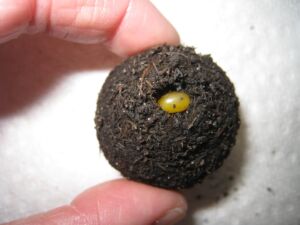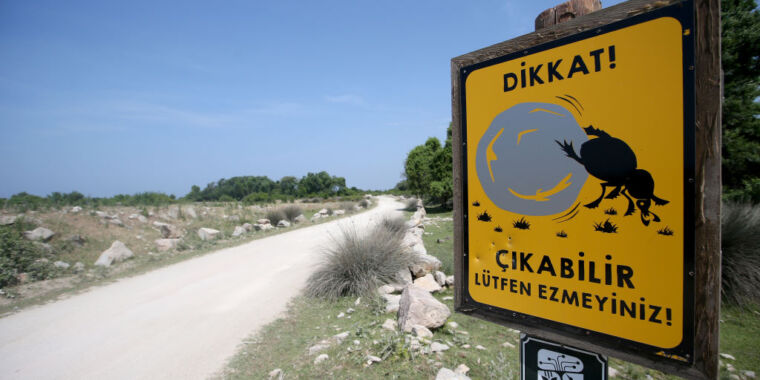
If the TV series dirty jobs covered both animals and humans, it would probably start with dung beetles. These hard-working critters are among the insect world’s foremost recyclers. They eat and bury manure from many other species, re-using nutrients and improving the soil as they go.
Dung beetles are found on every continent except Antarctica, in forests, grasslands, prairies and deserts. And now, like many other species, they are dealing with the effects of climate change.
I am an ecologist who has studied dung beetles for almost 20 years. My research spans tropical and temperate ecosystems and focuses on how these beneficial animals respond to temperature changes.
Insects do not use internally generated heat to maintain their body temperature. Adults can take actions such as moving to warmer or colder areas. However, earlier life stages such as larvae are often less mobile, so they can be strongly influenced by changing temperatures.
But dung beetles seem to have a defense: I’ve found that adult dung beetles adapt their nesting behavior in response to temperature changes by burying their brood balls deeper in the ground, protecting their developing offspring.
Champion recyclers
It’s easy to joke about these busy insects, but by collecting and burying dung, dung beetles provide many ecological benefits. They recycle nutrients, aerate the soil, reduce greenhouse gas emissions from livestock farming and reduce populations of pests and parasites that harm livestock.
Dung beetles are also important secondary seed dispersers. Dung from other animals, such as bears and monkeys, contains seeds that the beetles bury underground. This protects the seeds from being eaten, increases their chances of germination and improves plant growth.
There are about 6,000 species of dung beetles around the world. Most feed solely on manure, although some feed on dead animals, rotting fruit and mold.
Some species use stars and even the Milky Way to navigate straight paths. One species, the bull-headed dung beetle (Onthophagus taurus), is the world’s strongest insect, capable of pulling more than 1,000 times its own body weight.
This power comes in handy in the best-known behavior of dung beetles: collecting dung.
Rolling and tunneling

The most popular images of dung beetles show them collecting dung and rolling it into balls to dream away. In fact, some types of rollers and others are tunnellers that dig into the ground under a dung knock, bring dung down the tunnel and pack it into a clump or sphere called a brood ball. The female then lays an egg in each brood ball and refills the tunnel with soil. Rollers do the same when they have their dung ball safely away from the competition.
When the egg hatches, the larva feeds on dung from the brood ball, pupates and emerges as an adult. It thus undergoes a complete metamorphosis – from egg to larva to pupa to adult – in the brood ball.
Warmer temperatures, smaller beetles
Dung beetle parents do not care for their offspring, but their nesting behavior affects the next generation. If a female places a brood ball deeper underground, the larva in the brood ball experiences cooler, less variable temperatures than closer to the surface.
This is important because temperatures during development can affect offspring survival and other traits, such as adult body size. If temperatures are too high, offspring will die. Below that point, warmer, more variable temperatures lead to smaller beetles, which can affect the reproductive success of the next generation.
Smaller males cannot compete as well as larger males, and smaller females have a lower reproductive output than larger females. In addition, smaller-bodied beetles remove less dung, resulting in fewer benefits for humans and ecosystems, such as nutrient cycling.

